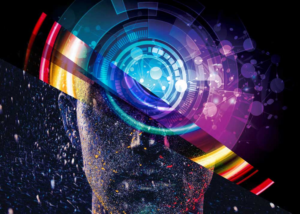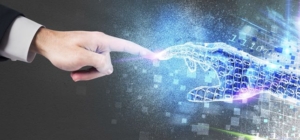 The AI scene has been buzzing, and if you’ve been keeping tabs, you’d know that consumer-ready products like ChatGPT, Google Bard, and IBM Watson are no longer just tech jargon — they’re part of our daily lives. McKinsey’s recent insights suggest that a staggering 50–60% of organizations are already harnessing the power of AI. And if Forbes’ predictions hold true, the AI industry, growing at a CAGR of 37.3%, will be worth a whopping $1.81 trillion by the decade’s end.
The AI scene has been buzzing, and if you’ve been keeping tabs, you’d know that consumer-ready products like ChatGPT, Google Bard, and IBM Watson are no longer just tech jargon — they’re part of our daily lives. McKinsey’s recent insights suggest that a staggering 50–60% of organizations are already harnessing the power of AI. And if Forbes’ predictions hold true, the AI industry, growing at a CAGR of 37.3%, will be worth a whopping $1.81 trillion by the decade’s end.
But what’s driving this surge? It’s not just about numbers and predictions; it’s about ground breaking technological trends. Here’s a look at some of them:
1. Fortune 500’s AI Love Affair
Miguel Machado of Keenfolks dropped some truth bombs recently. He highlighted the rapid pace at which AI products are scaling. Take OpenAI’s ChatGPT, for instance. Launched in March 2022, it already boasts over 100 million users. Machado believes that the flexibility AI offers will spur innovation, with Fortune 500 companies leading the charge. And with no-code solutions on the rise, integrating AI doesn’t need a tech wizard anymore.
2. Generative AI: The Game Changer
Remember when AI was all about predictions? Well, generative AI is flipping the script. Instead of just recycling data, it’s creating fresh, original content. Whether it’s text, images, or videos, generative AI is at the forefront. Henry Ajder, a generative AI guru, believes we’re just scratching the surface. He envisions a future where synthetic media isn’t just a cool tech trick but a tool that revolutionizes entertainment, education, and accessibility.
3. NLP: Making Machines Chat
Natural Language Processing (NLP) isn’t new, but its applications are evolving daily. From search engines to voice assistants, NLP is making machines more ‘human’. By leveraging tools like language modeling and sentiment analysis, machines are now understanding and responding to us in ways we never imagined.
4. C-Suite’s New Best Friend: AI
Back to Machado’s insights — he sees a trend where top-tier executives aren’t just using AI; they’re relying on it. Especially in sectors like law, HR, and finance, AI is becoming an indispensable tool. And with the democratization of AI through no-code solutions, it’s not just for the tech-savvy anymore.
5. Predictive Models vs. Generative AI
While predictive models have been the backbone of AI applications, focusing mainly on predictions based on existing data, generative AI is the new kid on the block. It’s all about creating new, original content. And in the past year, it’s been making waves, especially in content generation.
In a nutshell, AI’s growth isn’t just impressive; it’s transformative. And as we gear up for the future, one thing’s clear: AI isn’t just a trend; it’s the future. And Nigeria? It’s right at the heart of this revolution.
The Nigerian Perspective
Now, while the global AI trends are fascinating, let’s bring this closer to home. Nigeria, with its burgeoning tech scene and young, innovative minds, is perfectly positioned to ride this AI wave. The country’s tech hubs, from Lagos to Abuja, are buzzing with startups that are not just adopting AI but innovating with it.
Local educational institutions are also recognizing the importance of AI, with many introducing specialized courses and workshops. This focus on education ensures that Nigeria doesn’t just use AI but contributes to its evolution.
Moreover, the Nigerian government’s recent initiatives to support the tech industry signal a brighter future for AI innovations in the country. With potential regulatory frameworks in the pipeline, we can expect a more conducive environment for AI startups to thrive.
In conclusion, as the world stands on the brink of an AI revolution, Nigeria is not just a spectator. It’s an active participant, poised to make significant contributions. The fusion of global trends with local ingenuity promises a future where Nigeria isn’t just following the AI narrative but shaping it. So, to all tech enthusiasts, entrepreneurs, and innovators out there — the future is AI, and Nigeria is right at its epicenter. Let’s embrace it and drive the change we wish to see.

